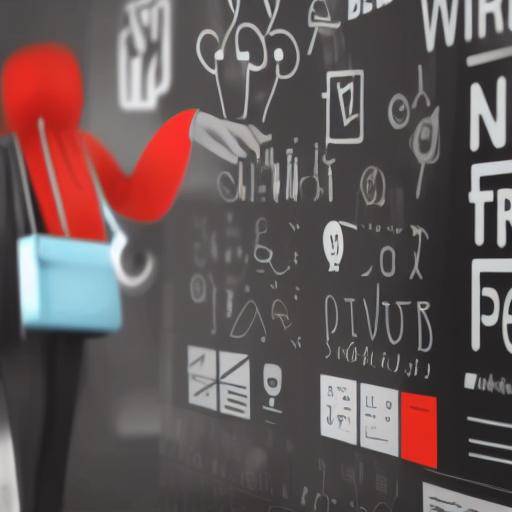
The working environment plays a key role in labour productivity and employee well-being. The personalization of this environment, which involves adapting it to the individual needs of each worker, has shown a significant impact on efficiency and job satisfaction. In this article, we will explore in depth the importance of the personalization of the working environment, its relation to productivity and well-being, as well as provide practical advice and real examples to implement it effectively.
Introduction
The custom working environment not only refers to the decoration or physical layout of the space, but also to the flexibility in terms of schedules, working tools, and policies that allow employees to adapt their working environment to their individual needs. Personalization can have a significant impact on motivation, concentration, and worker satisfaction, which in turn influences productivity and retention of talent in companies. Throughout this article, we will explore how the personalization of the working environment can contribute to productivity and well-being, as well as provide practical recommendations for its implementation.
History and Background
The idea of personalizing the working environment to improve the productivity and well-being of employees has its roots in the movements of industrial psychology and ergonomics in the early twentieth century. Since then, there has been a growing interest in understanding how the design and organization of the working environment influence the performance of employees. In recent decades, many studies have shown that the personalization of the working environment can have positive effects on productivity and well-being at the individual and organizational levels.
Analysis in Deep
Personalization of the working environment presents a number of benefits for both employees and companies. Personalized environments can increase labor satisfaction, foster creativity, improve concentration and reduce stress, which in turn can have a direct impact on employee productivity. The ability to customize the working environment can also contribute to the retention of talent and the creation of a more inclusive and flexible organizational culture.
However, the implementation of the customization of the working environment also poses challenges, such as the need to balance individualization with cohesion and team collaboration. It is essential to find a midpoint that allows employees to personalize their work spaces without compromising organizational cohesion and identity. In addition, it is important to consider the implications of customization in terms of equal opportunities and accessibility for all employees, regardless of their individual needs.
Comprehensive review
To successfully implement the customization of the working environment, a variety of approaches and best practices need to be considered. The creation of flexible spaces, the promotion of autonomy in the organization of work and the provision of customized tools and resources are some of the strategies that can be effective. It is important to adopt an approach focused on the individual needs of employees and to promote active participation in decision-making related to the working environment.
Studies show that companies that prioritize the personalization of the working environment often experience a significant improvement in productivity, the retention of talent and the well-being of their employees. This strategy can be particularly relevant in an increasingly diverse and dynamic working environment, where adaptation and flexibility has become a critical factor for organizational success.
Comparative analysis
The relationship between the personalization of the working environment, productivity and labour well-being is complex and multifaceted. While personalization may have substantial benefits, it is important to recognize that there is no single or universal solution that applies to all organizations. The way each company addresses the personalization of the work environment will depend on its culture, organizational structure and specific needs of its employees.
Practical Tips and Accessible Tips
Some practical steps that companies can take to implement the customization of the working environment include the creation of flexible workspaces that adapt to different work styles, provide adjustable and ergonomic furniture options, and encourage the incorporation of custom elements that reflect the individual identity and preferences of employees. In addition, it is crucial to involve employees in the design process and adapt workspaces according to their needs and preferences.
Industry Perspectives and Expert Reviews
Experts in talent management and workspace design agree that the customization of the working environment is an increasingly relevant strategy in the current context. They point out that well-being and productivity are closely related, and that the ability to adapt the working environment to the individual needs of employees can make the difference in terms of commitment, creativity and job performance.
Case Studies and Real Life Applications
Several leading companies have successfully implemented work environment customization initiatives. For example, some organizations have adopted flexible schedule policies that allow employees to adapt their working hours according to their personal needs, resulting in increased productivity and job satisfaction. Similarly, the incorporation of workspaces designed to foster collaboration, creativity and well-being has shown a positive impact on the performance of employees.
Future Trends and Predictions
As the job landscape evolves, customization of the working environment is likely to remain a priority for companies seeking to improve the productivity and well-being of their employees. The advance of technology, the diversification of labour forces and the growing attention to the balance between working and personal life will probably lead to new trends in the way in which the personalization of the working environment is conceived and implemented.
Conclusions
In short, personalization of the working environment plays a crucial role in productivity and well-being. By allowing employees to adapt their working environment to their individual needs, companies can foster motivation, creativity and commitment, which in turn has a significant impact on organizational productivity. It is essential that companies recognize the importance of personalizing the working environment and adopt strategies that promote the flexibility, autonomy and well-being of their employees.
Frequently asked questions
1. What is the impact of the customization of the working environment on employee productivity?
Personalization of the working environment can have a significant impact on employee productivity by encouraging job satisfaction, concentration and motivation. By adapting the working environment to their individual needs, employees tend to feel more committed and satisfied, resulting in better job performance.
2. What are the best practices to implement the customization of the working environment?
Some best practices to implement the customization of the working environment include the creation of flexible spaces, the provision of ergonomic and adjustable furniture options, and the promotion of employee participation in the design and organization of the workspace.
3. Does personalization of the working environment benefit all types of companies alike?
While the customization of the working environment can benefit a wide range of companies, it is important to recognize that the way it is implemented can vary according to organizational culture and the specific needs of employees. It is crucial to adapt customization strategies to the individual characteristics and circumstances of each company.
4. What is the role of personalizing the working environment in well-being?
Personalization of the working environment can play a key role in working well-being by providing employees with autonomy and flexibility to adapt their working environment to their individual needs. This can help to reduce stress, promote job satisfaction and promote a more inclusive and healthy working environment.
5. How to balance the personalization of the working environment with organizational identity?
Finding a balance between the personalization of the working environment and organizational identity can be a challenge. It is crucial to design strategies that allow employees to customize their workspaces without compromising organizational cohesion and culture. This may involve establishing clear guidelines and encouraging the co-creation of spaces that reflect both individual needs and organizational values.
6. What role does technology play in personalizing the working environment?
Technology plays a vital role in personalizing the working environment by offering tools and solutions that enable employees to adapt their working environment to their individual needs. From virtual workspaces to ergonomic and customizable devices, technology can facilitate the effective implementation of the customization of the working environment.
In conclusion, personalization of the working environment is a crucial aspect of improving productivity and well-being. Recognizing the individual needs of employees and providing them with the ability to adapt their working environment, companies can foster a healthier, creative and productive working environment. By adopting effective customization strategies, organizations can differentiate and remain competitive in an evolving working environment.






















































